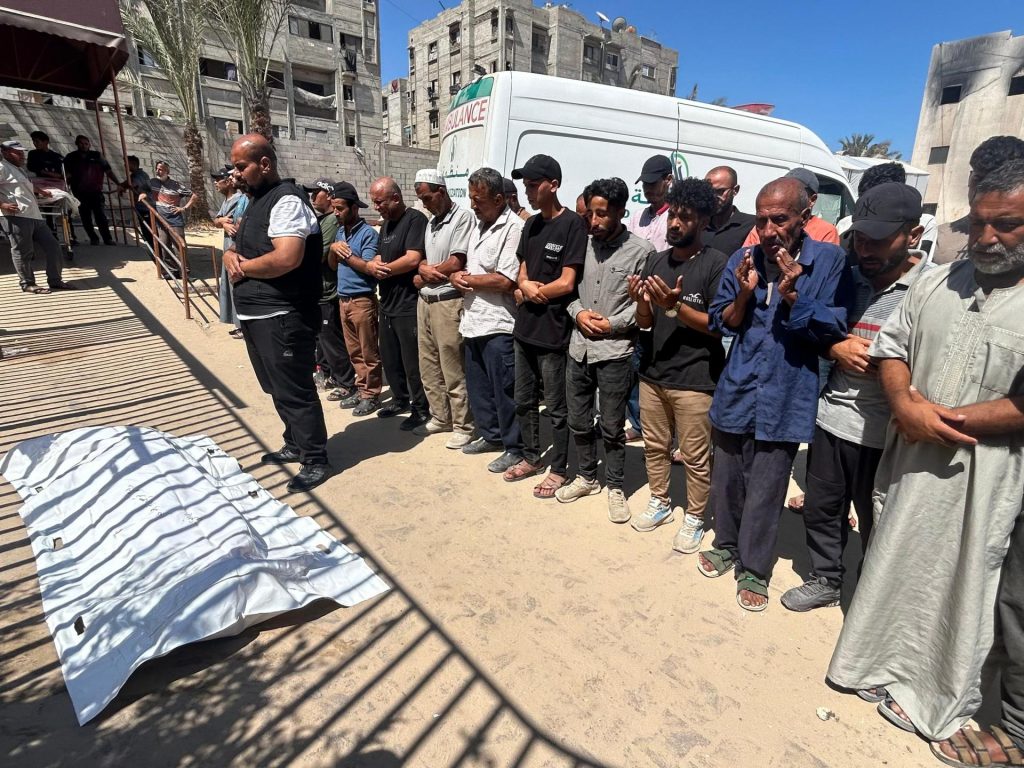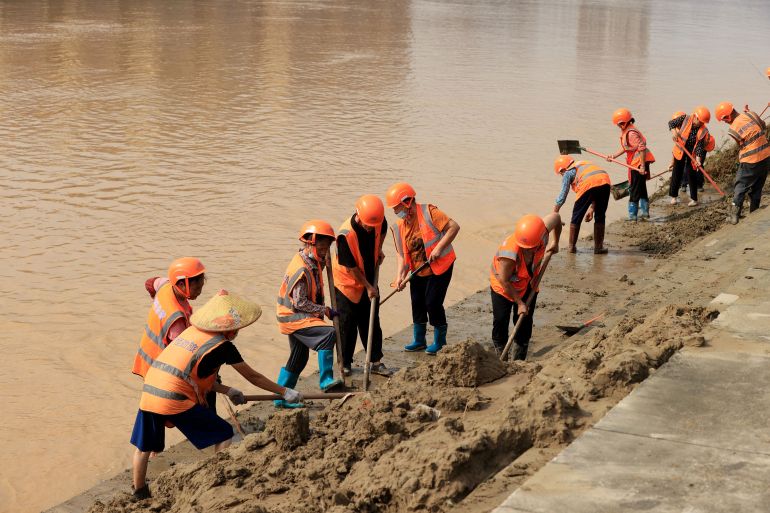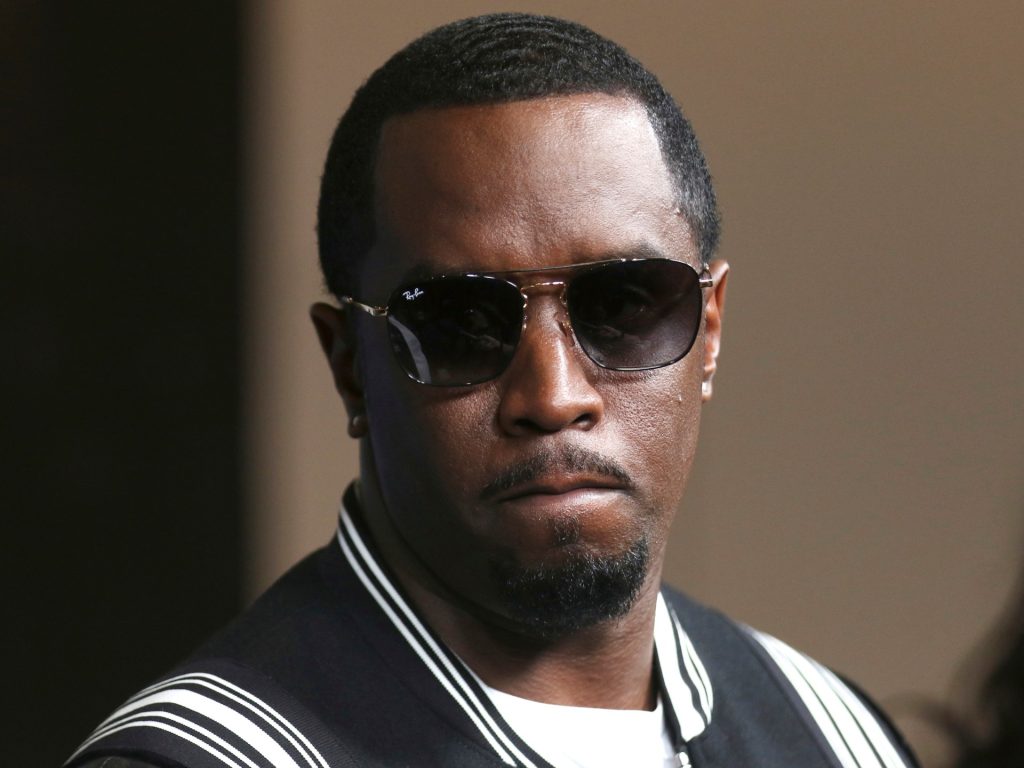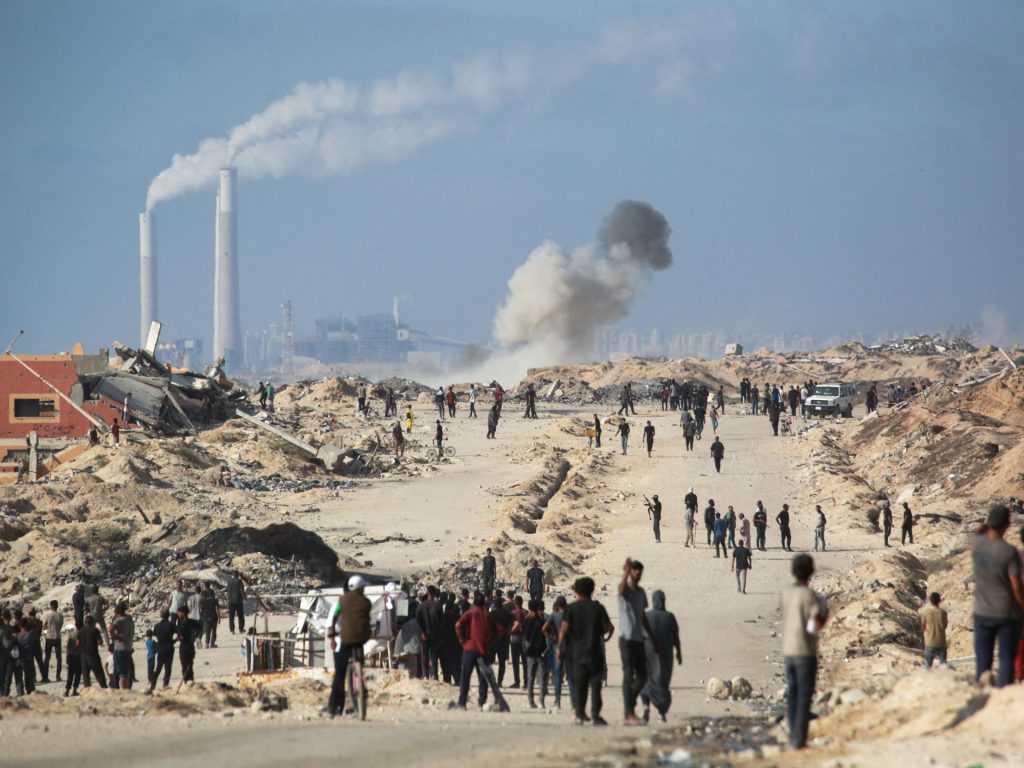Israel kills more than 300 in Gaza in 48 hours as possible truce in balance

More than 300 Palestinians have been killed by Israeli forces in the last 48 hours, according to the Gaza Government Media Office, which says Israel has “committed 26 bloody massacres” in that period. At least 73 people have been killed by Israel since dawn on Thursday, including 33 desperate aid seekers at the controversial Israeli and United States-backed Gaza Humanitarian Foundation (GHF) aid sites. Thirteen people were killed when Israeli forces attacked a tent in al-Mawasi in the south, while 11 were killed and many wounded in an attack on Mustafa Hafez School, sheltering displaced people west of Gaza City, medical sources told Al Jazeera. The Government Media Office statement on Thursday said the attacks over the last 48 hours had targeted civilians in shelters and displacement centres overcrowded with tens of thousands of displaced people, public rest areas, Palestinian families inside their homes, popular markets and vital civilian facilities, and starving civilians searching for food. Reporting from Deir el-Balah on the latest killings of Palestinians who were trying to get aid from centres run by GHF, Al Jazeera’s Tareq Abu Azzoum said, “People described scenes of horror as they wait for hours just hoping to get their hands on basic food supplies, only to be met with sudden and unprovoked gunfire … I’ve been speaking to a number of survivors this morning, and they told me such heartbreaking testimonies and they shared the horrific scenes that unfolded near the GHF-run aid centres.” Advertisement “They told me that there was no prior warning, no prior indication – just gunfire ripping through the crowd, desperate Palestinians scattered for cover as bullets flew. They told me that emergency services and medical teams were not able to access the area due to the intensity of the gunfire … This absolutely reflects the collapse of the humanitarian landscape here in Gaza,” he added. US contractors ostensibly guarding aid distribution sites in Gaza have been using live ammunition and stun grenades as hungry Palestinians scramble for food, according to accounts and videos obtained by The Associated Press news agency. Two US contractors, speaking to the AP on condition of anonymity, said they were speaking out because they were disturbed by what they considered dangerous practices. They said the security staff hired were often unqualified, unvetted, heavily armed and seemed to have an open licence to do whatever they wished. More than 130 humanitarian organisations, including Oxfam, Save the Children and Amnesty International, on Tuesday demanded the immediate closure of the GHF, accusing it of facilitating attacks on starving Palestinians. The NGOs said Israeli forces and armed groups “routinely” open fire on civilians attempting to access food. Since the GHF began operations in late May, more than 600 Palestinians have been killed while seeking aid, and nearly 4,000 have been wounded. Israel’s war on Gaza has killed at least 56,647 people and wounded 134,105, according to Gaza’s Ministry of Health. An estimated 1,139 people were killed in Israel during the Hamas-led October 7, 2023 attacks, and more than 200 were taken captive. Possible ceasefire in the balance Meanwhile, Hamas has said it is studying a new proposal for a 60-day ceasefire in Gaza, but insisted it is seeking an agreement that would bring an end to Israel’s devastating war. Hamas said in a statement on Wednesday that it had received proposals from the mediators and is holding talks with them to “bridge gaps” to return to the negotiating table and try to reach a ceasefire agreement. The Palestinian group said it was aiming for an agreement that would end the Gaza war and ensure the withdrawal of Israeli forces from the enclave. The announcement came a day after US President Donald Trump said Israel had agreed to the ceasefire proposal and urged Hamas to accept the deal before conditions worsen. Trump has been increasing pressure on the Israeli government and Hamas to broker a ceasefire and an agreement for the group to release the Israeli captives held in Gaza. Advertisement Al Jazeera’s Hamdah Salhut, reporting from Amman, said, “For the first time since the beginning of the war, the Israelis are signalling a potential end to the war on Gaza.” Israeli Prime Minister Benjamin Netanyahu has been holding consultations with his security team, according to media reports, and is showing flexibility, Salhut added, due to pressure from Trump. Adblock test (Why?)
China’s north and west on red alert for heavy rains after deadly floods

Weather warnings come as Vice Premier Zhang Guoqing urges officials in Hebei province to up their evacuation efforts. Northern and western China remain on high alert as torrential rain threatens to bring more flash flooding and landslides, following weather-related deaths in other parts of the country. Red alerts were in force on Thursday as rains made their way to Gansu province in the northwest and then up to Liaoning province in the northeast. The weather warnings came as more than 1,000 rescue workers were sent on Wednesday to Taiping, a town in the central Henan province, where five people died and three were declared missing after a river burst its banks, according to state media. Another state media report confirmed that two people were killed by a landslide at a construction site in Gansu after heavy rain on Wednesday and Thursday. Meanwhile, a record summer downpour hit the city of Xianfeng in China’s central province of Hubei, bringing more than a month’s rain in just 12 hours, with local videos showing torrents washing away cars. Workers clean up mud after floodwater subsided in Liuzhou, in China’s southwest Guangxi region on June 25, 2025 [AFP] On Tuesday, the authorities there evacuated 18,000 people, closed schools and suspended bus services. During a two-day trip to the northern province of Hebei, China’s Vice Premier Zhang Guoqing urged local officials to ramp up the scale of evacuations. Although China has a nationwide system to forecast and monitor severe weather, scientists say it is hard to make localised predictions, especially in rural communities that lack forecasting capabilities. “Accurately forecasting the intensity and exact location of heavy rain remains challenging, especially with climate change and the complex terrain of rural areas,” Meng Gao, a climate modelling specialist at Hong Kong Baptist University, told the Reuters news agency earlier this week. Last July, the “plum rains”, which coincide with the plum-ripening season, caused more than $10bn in economic losses in China. Advertisement Adblock test (Why?)
Trump rages as rebel House Republicans baulk at backing Big Beautiful Bill

Efforts to win over holdout House Republicans extend into early hours as Trump’s tax and spending bill hits hurdles. Republicans in the United States House of Representatives have been locked in a dramatic impasse over President Donald Trump’s signature tax and spending package, as a rebel group of lawmakers failed to support the bill that all Democratic representatives oppose. The standoff over the Trump administration’s flagship domestic policy package, dubbed the One Big Beautiful Bill, stretched into the early hours of Thursday, as the Republican leadership worked furiously to try to persuade holdouts to send the bill to Trump’s desk by a Friday, July 4 deadline, US Independence Day, while Trump railed against the rebels on social media. “For Republicans, this should be an easy yes vote. Ridiculous!” he posted on his Truth Social platform. “Largest Tax Cuts in History and a Booming Economy vs. Biggest Tax Increase in History, and a Failed Economy. What are the Republicans waiting for?” he added, threatening that “MAGA is not happy, and it’s costing you votes.” Five Republicans voted “no” in the procedural vote to advance the legislation, while eight have yet to cast a vote. Assuming all Democratic members cast a vote against the bill, Trump can afford to lose only three Republican votes if it is to advance to a final vote. Centrepiece legislation The hefty 800-page bill, the centrepiece of the president’s domestic agenda, combines sweeping tax cuts, spending hikes on defence and border security, and cuts to social safety nets into one giant package. But it faces opposition within Trump’s Republican Party, with moderate critics expressing concern about its cuts to social safety-net programmes like Medicaid, and conservatives baulking at the trillions it is likely to add to the national debt. Advertisement Five Republicans voted against the bill: representatives Victoria Spartz of Indiana, Andrew Clyde of Georgia, Keith Self of Texas, Brian Fitzpatrick of Pennsylvania, and Thomas Massie of Kentucky. House Speaker Mike Johnson had summoned lawmakers to Washington for a roll call vote, in a bid to capitalise on the momentum of the bill’s passage a day earlier in the Senate and win House approval ahead of the July 4 national holiday. Lawmakers had passed the bill by a 51 to 50 vote in the Republican-controlled chamber on Tuesday, after Vice President JD Vance broke the tie. But the risky gambit to hold the roll call vote swiftly hit hurdles, with some Republican lawmakers resisting the request to rubber stamp the Senate version of the bill so soon after it passed. ‘Bad bill to enrich those who are already rich’ Johnson said he would keep voting open “as long as it takes”, as senior Republicans attempted to persuade holdouts to support the bill. He said he believed that the Republican holdouts were “going to come on board”, and expected to proceed to a final vote on the legislation in the early hours of Thursday morning, The New York Times reported. As Republicans remain deadlocked, Democrats ramped up their criticisms of the policy package. In a video message posted on social media, Representative Chuy Garcia described the legislation as a “bad bill to enrich those who are already rich”. It’s past midnight in DC and Republicans are still trying to rip healthcare and food from working families to give tax breaks to billionaires. Call your Republican representative and tell them to vote HELL NO pic.twitter.com/IfyXFdSaqs — Congressman Chuy García (@RepChuyGarcia) July 3, 2025 So far, 217 House Representatives have voted against advancing the legislation, including five Republicans, while 207 are in favour. Members can change their vote until voting closes, and eight Republicans have yet to vote. The bill needs 218 votes to advance. Adblock test (Why?)
At least eight people die in record-breaking heatwave across Europe

Scientists say heatwaves and storms are becoming more intense due to human-driven climate change. At least eight people have died across Europe as an early summer heatwave grips much of the continent, triggering health alerts and forest fires and forcing the closure of a nuclear reactor at a Swiss power plant. Authorities in Spain’s Catalonia region said about 14,000 people were ordered to stay indoors due to two wildfires that broke out almost simultaneously in the province of Lleida. In one of the blazes near the city of Cosco, “two people were found lifeless by firefighters,” the fire and emergency service said in a statement on Wednesday. The exact cause of the fire was unclear, but the service said the recent heat, dry conditions and strong winds increased the intensity of the flames. Tuesday’s fire in the Catalonia region burned several farms and affected an area stretching about 40km (25 miles) before being contained, officials said. On Wednesday, Spanish officials reported two more people died due to the heatwave in Extremadura and Cordoba. Spain is in the midst of an intense heatwave with temperatures exceeding 40 degrees Celsius (104 degrees Fahrenheit) in many places, and several heat records were set for the month of June. France also experienced its hottest June since 2003. Its energy minister reported two deaths linked to the heat with 300 others taken to hospital on Wednesday. Weather forecaster Meteo France said red alerts remained for several areas of central France, and Catherine Vautrin, the health and families minister, said authorities should remain vigilant. Advertisement “In the coming days, we’ll see the consequences, particularly on the most vulnerable, and I’m thinking particularly of the elderly,” she said. Two men over the age of 60 also died from the heat on beaches in Sardinia in Italy, the ANSA news agency reported. In Germany, temperatures were forecast to peak at 40C (104F) in some areas, making it the hottest day of the year. Fire brigades were also tackling several forest fires in the eastern states of Brandenburg and Saxony on Wednesday. Storm warnings issued Italy, France and Germany have also warned of the risk of powerful storms due to excessive warming in unstable atmospheres. Violent storms in the French Alps late on Monday triggered mudslides, disrupting rail traffic between Paris and Milan. The Swiss utility Axpo shut down one reactor at the Beznau Nuclear Power Plant and halved output at another on Tuesday because of the high temperature of river water. Water is used for cooling and other purposes at nuclear power plants, and restrictions were expected to continue as temperatures are monitored. Scientists said heatwaves have arrived earlier this year, spiking temperatures by up to 10C (50F) in some regions as warming seas encouraged the formation of a heat dome over much of Europe, trapping hot air masses. Greenhouse gas emissions from burning fossil fuels are a cause of climate change, they said, with deforestation and industrial practices being other contributing factors. Last year was the planet’s hottest on record. “Extreme heat is testing our resilience and putting the health and lives of millions at risk,” Inger Andersen, executive director of the United Nations Environment Programme, told the Reuters news agency. “Our new climate reality means we can no longer be surprised when temperatures reach record highs each year,” she added. Adblock test (Why?)
Sean ‘Diddy’ Combs convicted on two of five counts in sex abuse trial

A jury in the United States has found musician Sean “Diddy” Combs guilty of prostitution-related offences but cleared him of more serious charges after a federal criminal trial. Combs, a celebrated figures in hip hop music, was convicted on Wednesday of transportation to engage in prostitution but acquitted of racketeering conspiracy and two counts of sex trafficking. The verdict culminates seven weeks of trial in which two of the music mogul’s former girlfriends – singer Casandra “Cassie” Ventura and a second woman referred to as “Jane” – testified that Combs physically and sexually abused them. The jury’s decision also represents a partial win for the former billionaire known for elevating hip hop in US culture, through his work with artists like Notorious BIG and Usher. After the jury read its verdict, defence lawyer Marc Agnifilo asked US District Judge Arun Subramanian to release Combs on bail. “This is his first conviction and it’s a prostitution offence, and so he should be released on appropriate conditions,” Agnifilo said. Subramanian will determine Combs’ sentence at a later date. The acquittals on the sex trafficking counts mean he will avoid a 15-year mandatory minimum sentence. He could have faced life in prison if he were convicted of sex trafficking or racketeering conspiracy. Prosecutors say that, for two decades, Combs used his business empire to force his romantic partners to take part in drug-fuelled, days-long sexual performances with male sex workers in hotel rooms. These performances were sometimes referred to as “freak-offs”. Advertisement During raids of Combs’s homes, authorities found drugs and 1,000 bottles of baby oil and lubricant that he would use in the performances, prosecutors said. Combs, 55, had pleaded not guilty to all five counts. His lawyers acknowledged that the Bad Boy Records founder, once famed for hosting lavish parties, was at times violent in his domestic relationships. But they argued the sexual activity described by prosecutors was consensual. The musician has previously faced a number of civil lawsuits accusing him of abuse. Ventura, for example, sued Combs in November 2023 for sex trafficking. Combs, also known throughout his career as Puff Daddy and P Diddy, settled with Ventura for $20m. He has denied all wrongdoing. At the trial, jurors saw surveillance footage from 2016 showing Combs kicking and dragging Ventura in the hallway of an InterContinental hotel in Los Angeles, where she said she was trying to leave a “freak-off”. Jane later testified that Combs, in June 2024, attacked her and directed her to perform oral sex on a male entertainer, even though she told him she did not want to. That alleged attack took place a month after Combs apologised on social media for his 2016 attack on Ventura, footage of which had been broadcast on CNN. “The defendant used power, violence and fear to get what he wanted,” prosecutor Christy Slavik said in her closing argument on June 26. “He doesn’t take no for an answer.” Combs’s defence lawyers argued that, while he may have committed domestic violence in the context of volatile romantic partnerships, his conduct did not amount to sex trafficking. His defence team said Ventura and Jane were strong, independent women who voluntarily took part in the sexual performances because they wanted to please Combs. They also suggested that Ventura and Jane were retrospectively accusing Combs of forcing their participation in the performances because they were jealous he was seeing other women. Both women testified they spent time with Combs and took part in sexual performances after he beat them. “If he was charged with domestic violence, we wouldn’t all be here,” defence lawyer Agnifilo said in his closing argument on June 27. “He did not do the things he’s charged with.” Ventura’s lawyer Doug Wigdor, meanwhile, praised his client’s courage to speak up, saying she “paved the way” for Combs’s conviction. “By coming forward with her experience, Cassie has left an indelible mark on both the entertainment industry and the fight for justice,” Wigdor said in a statement. Advertisement Separately, the US Attorney’s Office for the Southern District of New York published remarks underscoring the lasting impact of sexual violence. “Sex crimes deeply scar victims, and the disturbing reality is that sex crimes are all too present in many aspects of our society,” the statement read. “New Yorkers and all Americans want this scourge stopped and perpetrators brought to justice.” Adblock test (Why?)
Can the DRC-Rwanda deal deliver peace?

The US-brokered peace agreement comes after years of conflict, displacing 7 million people. The conflict in the Democratic Republic of the Congo (DRC) involving a long history with neighboring Rwanda has created one of the largest humanitarian crises in the world. With a United States-brokered agreement between the DRC and Rwanda to end the war, will there be peace? Adblock test (Why?)
Sailing to break the siege on Gaza
[unable to retrieve full-text content] Al Jazeera Mubasher’s Omar Faiad recounts life aboard the Madleen aid ship headed to Gaza.
Can Trump strip Musk and Mamdani of their US citizenship?

US President Donald Trump and officials from his administration have hinted that they might consider revoking the US citizenship of Zohran Mamdani, New York City’s Democratic mayoral candidate. Separately, Trump said former aide Elon Musk would have to “close up shop and head back home to South Africa” amid a row over his tax breaks and Trump’s narrowly passed spending bill. But would the Trump administration have the power to revoke the citizenship of Mamdani and Musk, both foreign-born, naturalised citizens of the US? What is the immigration status of Mamdani and Musk? Mamdani, 33, was born in the Ugandan capital, Kampala, to ethnically Indian parents. He moved to New York at the age of seven and became a naturalised US citizen in 2018. Musk was born in 1971 in Pretoria, South Africa to a Canadian mother and South African father. At the age of 17, he moved to Canada of where he is also a citizen. In 1992, he moved to the US to study at the University of Pennsylvania. He became a naturalised US citizen in 2002, according to a biography of him written in 2023 by journalist Walter Isaacson. In October 2024, the Washington Post reported that Musk began his career in the US without the proper work authorisation, but Musk has denied this. “I was in fact allowed to work in the US,” Musk wrote in an X post on the same day the report was published. “I was on a J-1 visa that transitioned to an H1-B,” Musk wrote in another post. A J-1 visa is a temporary visa for foreign students, while an H-1B is a temporary work visa. Advertisement To become naturalised as a US citizen, an individual needs to be above the age of 18 and to have lived continuously in the US as a green card holder for five years, or three years if they are married to a US citizen. What has the Trump administration said about Mamdani? Andy Ogles, a Republican Tennessee representative, wrote to Attorney General Pam Bondi on June 26, asking for the Department of Justice to probe whether Mamdani, who identifies as a democratic socialist, should be subject to denaturalisation proceedings. Posting a copy of the letter to Bondi on his X page, Ogles wrote: “Zohran ‘little muhammad’ Mamdani is an antisemitic, socialist, communist who will destroy the great City of New York. He needs to be DEPORTED. Which is why I am calling for him to be subject to denaturalization proceedings.” Ogles said that the investigation should be conducted on the grounds that Mamdani may have procured US citizenship through “willful misrepresentation or concealment of material support for terrorism.” The Tennessee Republican cited reports, including an article published in the New York Post, stating that Mamdani expressed solidarity with “individuals convicted of terrorism-related offenses prior to becoming a US citizen.” Ogles said that Mamdani rapped “Free the Holy Land Five / My guys.” “The Holy Land Foundation was convicted in 2008 for providing material support to Hamas, a designated foreign terrorist organization. Publicly praising the Foundation’s convicted leadership as ‘my guys’ raises serious concerns about whether Mr. Mamdani held affiliations or sympathies he failed to disclose during the naturalization process,” Ogles wrote in his letter to Bondi. “Moreover, Mr. Mamdani has recently refused opportunities to reject the pro-terrorist rallying cry to ‘globalize the intifada’ a call to expand violent attacks on civilians to the United States and around the world,” Ogles wrote. Zohran “little muhammad” Mamdani is an antisemitic, socialist, communist who will destroy the great City of New York. He needs to be DEPORTED. Which is why I am calling for him to be subject to denaturalization proceedings. Attached is my letter to @AGPamBondi. pic.twitter.com/RWCZm67VOr — Rep. Andy Ogles (@RepOgles) June 26, 2025 Mamdani has also pledged to stop masked Immigration and Customs Enforcement (ICE) agents “from deporting our neighbours”. When Trump was asked about this on Tuesday at a news conference, he said that if Mamdani prevents ICE agents from conducting deportation operations, “Well, then, we’ll have to arrest him.” Advertisement “We don’t need a communist in this country, but if we have one, I’m going to be watching over him very carefully on behalf of the nation,” Trump said, adding, “we’ll send him money, we’ll send him all the things he needs to run the government.” Trump continued, citing claims that Mamdani is in the US illegally, saying, “We’re going to look at everything”. The president also voiced support for the current New York mayor, Eric Adams, who is also a member of the Democratic Party. How has Mamdani responded? Mamdani posted a statement on his X account in response to Trump’s comments on Tuesday. “The President of the United States just threatened to have me arrested, stripped of my citizenship, put in a detention camp and deported. Not because I have broken any law but because I will refuse to let ICE terrorize our city,” Mamdani wrote in his statement. Mamdani also called Trump’s praise of Adams “unsurprising”, adding: “At the very moment when MAGA Republicans are attempting to destroy the social safety net, kick millions of New Yorkers off of healthcare and enrich their billionaire donors at the expense of working families, it is a scandal that Eric Adams echoes this President’s division, distraction and hate. Voters will resoundingly reject it in November.” My statement on Donald Trump’s threat to deport me and his praise for Eric Adams, who the President “helped out” of legal accountability. https://t.co/m7pNcT2DFS pic.twitter.com/UcYakMx4lI — Zohran Kwame Mamdani (@ZohranKMamdani) July 1, 2025 What has the Trump administration said about Elon Musk? While the billionaire owner of Tesla and SpaceX was once a key aide to Trump and a major donor to his presidential campaign last year, Trump’s “Big Beautiful Bill” has created a public rift between Trump and Musk. Musk has repeatedly decried the bill online and has threatened to form a new political party as a response to the bill passing. Musk stands to
Tesla global sales fall amid Musk backlash and pressure on EV market

Other carmakers including Volvo and Rivian reported a drop in sales on Wednesday. Tesla has reported another hefty drop in auto sales extending a difficult period amid intensifying electric vehicle competition and backlash over CEO Elon Musk’s political activities. On Wednesday, the electric vehicle (EV) maker reported 384,122 deliveries in the second quarter, representing a 13.5 percent decline from this time a year ago. Its earnings report will be released after the market close. Sales were roughly in line with analyst expectations. The global sales figures reflect the more contested nature of the EV market, which Tesla once dominated, but which now also features BYD and other low-cost Chinese companies, as well as legacy Western carmakers like General Motors, Toyota and Volkswagen. However, demand for EVs has slumped amid tariff fears and the looming end of the EV tax credit in the United States. On Wednesday, Volvo also announced that fully electric sales fell by 26 percent in June. Rivian sales also tumbled. The electric carmaker said there was a 22.7 percent drop in sales compared with to this time last year. Musk weighing on sales and the stock Musk’s political activism on behalf of right-wing figures has also made the company a target of boycotts and demonstrations, weighing on sales. Musk donated more than $270m to US President Donald Trump’s 2024 campaign, barnstorming key battleground states for the Republican. But in the last few weeks, he has had a falling out with Trump, driven by the president’s wide-ranging tax and spending bill. Musk’s objections to the “Big Beautiful Bill” has escalated tensions between the two. In a social media post, Musk accused bill supporters of backing “debt slavery”. Advertisement In response, the president called for the Department of Government Efficiency to look at subsidies for Musk’s companies, sending the stock tumbling and it closed down 5.3 percent on Tuesday. A brighter future? But analysts believe that increased production of the Model Y and 3 could show a positive road ahead for the EV-maker, which produced 396,835 cars of the two models in the second quarter — up from 345,454 in the first quarter. “We believe Tesla is on a path to an accelerated growth path over the coming years with deliveries expected to ramp in the back-half of 2025 following the Model Y refresh cycle,” Dan Ives, analyst at Wedbush Securities, said in a note to Al Jazeera. Musk has acknowledged that his work as head of the Department of Government Efficiency and his embrace of European far-right candidates have hurt the company. But he attributed much of the sales plunge to customers holding off while they waited for new versions of Tesla’s best-selling Model Y, and recently predicted a major turnaround in sales. The company is focusing more on robots, self-driving technology and robotaxis ferrying passengers around without anyone behind the wheel its test run of robotaxis in Austin, Texas, seems to have gone smoothly for the most part. But it also has drawn the scrutiny of federal car safety regulators because of a few mishaps, including one case in which a Tesla cab was shown on a widely shared video heading down an opposing lane. On Wednesday, Tesla stock was trending upwards at 11am in New York (15:00 GMT) and was up 4.73 percent for the day, however, it is down 3.02 percent over the last five days. Adblock test (Why?)
Hamas-run court gives Gaza gang leader Abu Shabab 10 days to surrender

Abu Shabab is the leader of the Popular Forces, a criminal group in southern Gaza thought to be backed by Israel. A Hamas-run court in Gaza has ordered Yasser Abu Shabab, the leader of a criminal group allegedly backed by Israel, to surrender himself for trial. The Revolutionary Court of the Military Judiciary Authority in Gaza gave the 35-year-old head of the Popular Forces group, which stands accused of collaborating with Israel to loot humanitarian aid, 10 days to turn himself in. Abu Shabab faces charges of treason, collaborating with hostile entities, forming an armed gang and armed rebellion, the court said on Wednesday, adding that he would be tried in absentia if he fails to surrender. The Popular Forces posted a response on a Facebook page that usually carries its announcements, describing the court’s order as a “sitcom that doesn’t frighten us, nor does it frighten any free man who loves his homeland and its dignity”. The group and its leader were thrust into the limelight last month when Israeli Prime Minister Benjamin Netanyahu said his government had “activated” powerful local clans in Gaza on the advice of “security officials”. Israeli and Palestinian media named the group as the Popular Forces, a well-armed Bedouin clan led by Abu Shabab, reportedly consisting of about 100 armed men. The group later said online that its members were involved in guarding aid shipments sent to distribution centres run by the Gaza Humanitarian Foundation (GHF), which Israel contracted to distribute aid in the enclave. Mass killings of aid seekers near the US-backed GHF distribution centres, which replaced existing distribution networks run by the United Nations and other experienced aid groups, have become a routine occurrence. Advertisement The European Council on Foreign Relations think tank has described Abu Shabab as the leader of a “criminal gang operating in the Rafah area that is widely accused of looting aid trucks”. It said he was thought to have been previously imprisoned by Hamas for drug trafficking. The court urged Palestinians to inform Hamas security officials about the whereabouts of Abu Shabab, who has so far remained beyond their reach in the Rafah area of southern Gaza held by Israeli troops. It said anyone who knows of Abu Shabab’s location and fails to report him would be considered to have concealed a fugitive from justice. Adblock test (Why?)

